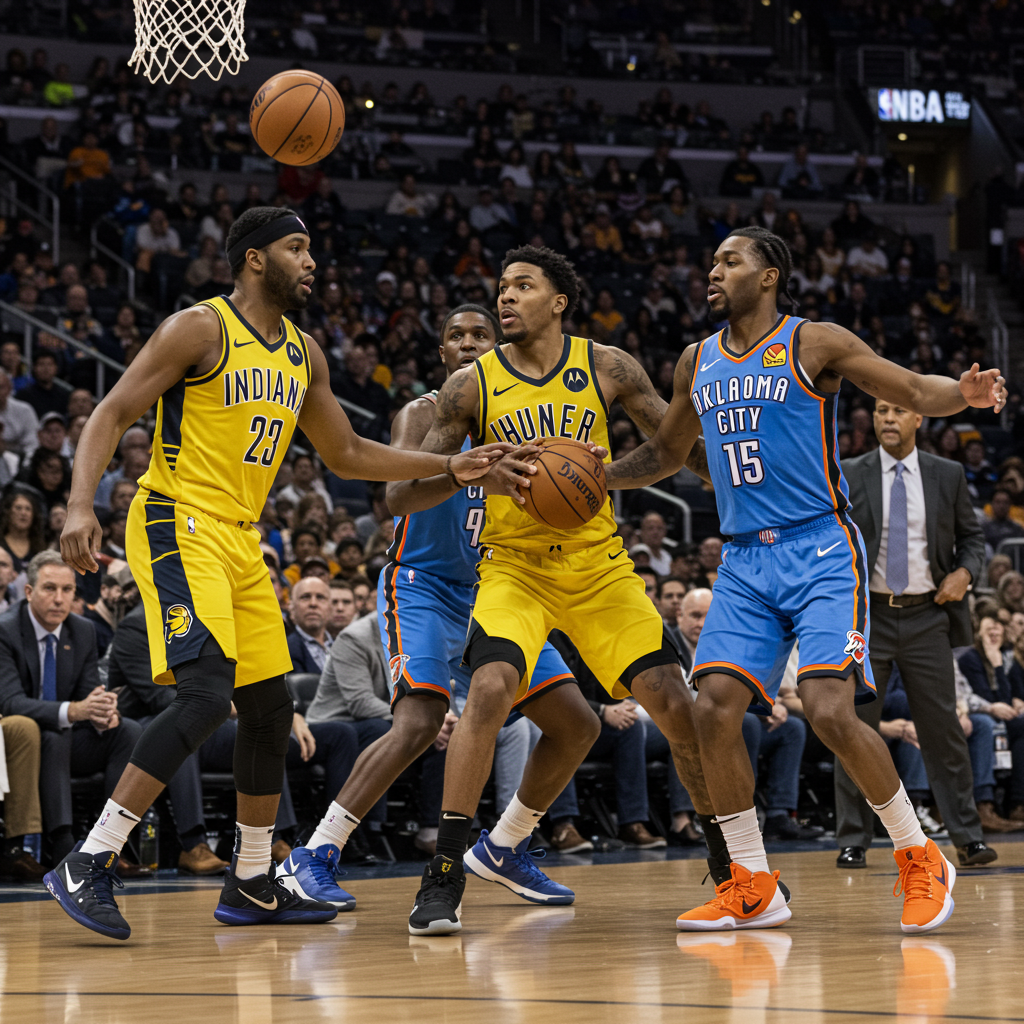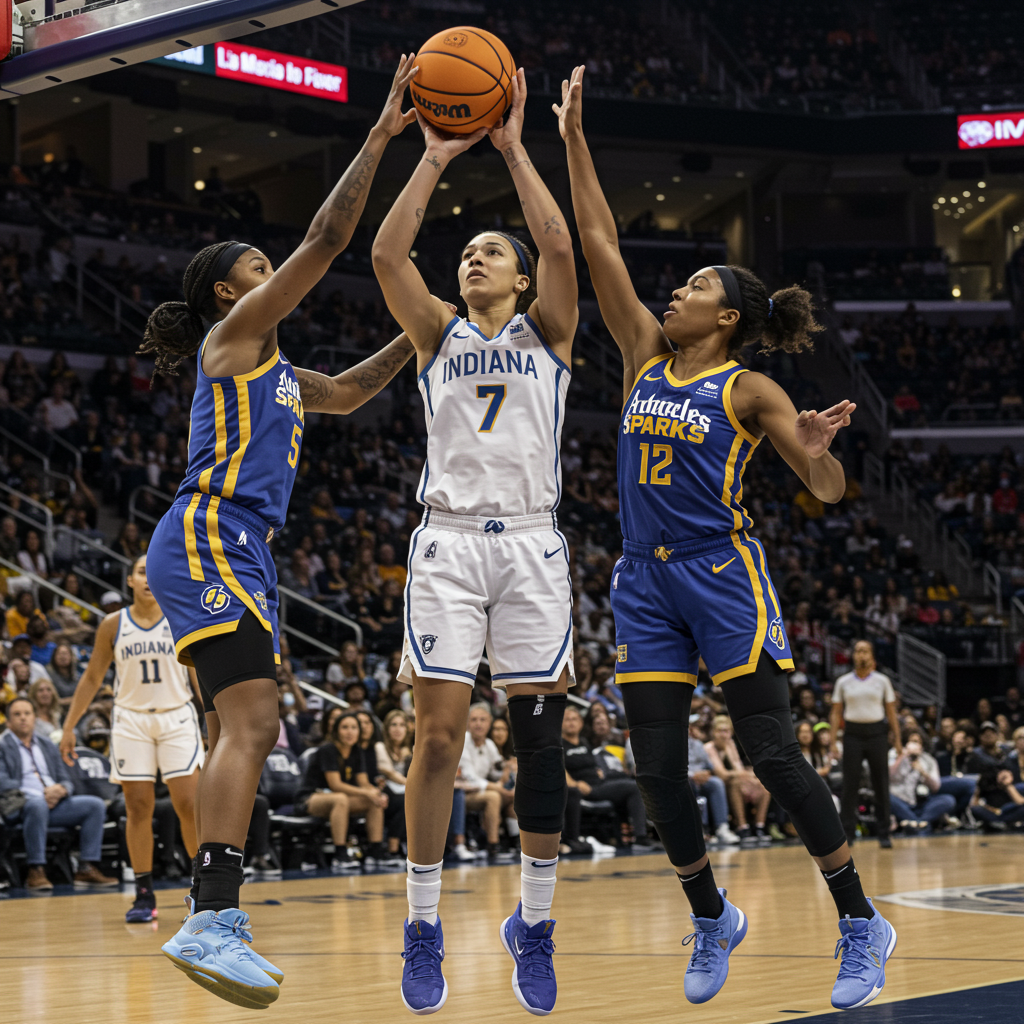The 2025 NBA Finals between the Indiana Pacers and Oklahoma City Thunder has been a captivating, rollercoaster ride. With the series tied 3-3, it all comes down to a single, winner-take-all Game 7 at the Paycom Center in Oklahoma City on Sunday. This unpredictable battle, described by coach Rick Carlisle as having “drastic swings” from game to game, means analyzing past contests offers limited insight into what happens next.
“You never know how it’s going to go,” Carlisle noted. “Each game takes on a different personality… The truth is that nothing else previous to this matters at all now. We’re just down to one game and one opportunity.”
Despite the volatility, consistent patterns have emerged throughout the series. Success in Game 7 is likely to hinge on mastery of these pivotal aspects of the game. Here are five key factors that could determine which team hoists the NBA championship trophy:
1. The Crucial Turnover Battle
Turnovers and the points they generate have proven to be a major predictor of success in this series. Both the Pacers and Thunder excel in this area, typically committing few turnovers while forcing many. The Thunder led the league in steals (10.3 per game) and opponent turnovers (17.0 per game) in the regular season, while also committing the fewest turnovers (11.7). The Pacers were also highly ranked in these categories.
In the playoffs, the Thunder rank first in points off turnovers, with the Pacers a close second. Conversely, the Thunder are second in allowing the fewest points off turnovers, and the Pacers are fourth. This defensive intensity and transition prowess define both teams.
The correlation in the Finals has been stark. The Pacers won Game 3 with a 21-14 edge in points off turnovers and Game 6 with a 19-13 advantage. In contrast, the Thunder powered their Game 4 and 5 victories by dominating this metric, outscoring Indiana 57-32 off turnovers in those two games combined, including a decisive 32-9 margin in Game 5. Across the series, OKC holds a slight edge (18.2-15.5 points off turnovers per game), but staying below their season averages shows how well both defenses contest.
Winning teams in this series generally limit their own mistakes while capitalizing on their opponent’s. The Thunder boast an impressive 73-18 record when committing fewer turnovers than their opponent, compared to just 10-3 when they turn it over more – and two of those three losses came in this series (Game 3, Game 6). The Pacers, conversely, are 10-1 in the playoffs when turning it over 13 times or fewer, but only 5-6 when exceeding 14 turnovers. For the Pacers to win on the road, they must protect the ball and prevent the Thunder from converting steals into devastating transition runs. The Thunder, after committing 21 turnovers in Game 6 (8 by Shai Gilgeous-Alexander), absolutely must prioritize ball security.
2. Impact of 3-Point Shooting
While the Thunder’s stars, Shai Gilgeous-Alexander and Jalen Williams, have consistently attacked the basket, giving OKC a significant edge in points in the paint (44.7-38.7 per game) and free throw attempts, the 3-point shot has been Indiana’s primary equalizer. The Pacers average 13.0 made 3-pointers per game to the Thunder’s 10.0 in the series.
Indiana’s Game 1 comeback was fueled by hitting 18 threes, including 10 in the second half. They also knocked down 15 in their Game 6 win. However, the Thunder are a strong shooting team themselves (6th in makes and percentage in the regular season) and hit 14 threes in their most convincing wins (Games 2 and 5).
Interestingly, many of the most impactful outside shots in the series have come from role players rather than stars. Aaron Nesmith (48.5%) and Obi Toppin lead the Pacers in efficiency and makes, while Tyrese Haliburton has struggled from deep (31.7%). For the Thunder, Luguentz Dort (15-of-31), Aaron Wiggins (10-of-21), and Alex Caruso (8-of-20) have been more consistent than stars Gilgeous-Alexander (6-of-21), Williams (6-of-23), and Chet Holmgren (2-of-17). Role players often shoot better at home, which could favor OKC’s depth shooters, but the Pacers have also shot a respectable 39.4% from three in OKC during the Finals. The ability of each team’s supporting cast to consistently knock down outside shots, especially for the Pacers to offset the Thunder’s interior scoring, will be critical.
3. Bench Production Prowess
Both the Pacers and Thunder value their depth, and the performance of their respective benches has been a consistent factor in the series’ outcomes. In four of the six games played, the team whose reserves scored more points ultimately won, including all three of Indiana’s victories. Notable bench scoring disparities were seen in Game 2 (OKC 48, IND 34 – Thunder win) and Game 3 (IND 49, OKC 18 – Pacers win).
The Pacers’ bench holds an advantage over the series, averaging 41.5 points per game compared to the Thunder’s 30.8. Indiana’s subs also shoot better from the field (48.9% vs. 44.5%) and contribute more rebounds and assists. OKC’s bench shoots better from three (44.3% vs. 39.1%) and averages more steals.
Key contributors off the bench include Indiana’s T.J. McConnell (11.3 points, 4.5 assists, 2.3 steals per game) and Obi Toppin (12.8 points, 5.5 rebounds). Toppin, particularly, has been highlighted as a potential X-factor due to his ability to provide offensive energy and score in bunches, leading the Pacers with 20 points in their Game 6 win. For OKC, Alex Caruso (10.2 points) has been a steady two-way presence, while Aaron Wiggins’ production has been more variable but impactful in Thunder wins. The Pacers have also struggled significantly when Tyrese Haliburton is off the court, being outscored by 14.5 points per 100 possessions in those minutes, highlighting the importance of their bench unit picking up the slack. The team that gets the bigger boost from its reserves is more likely to come out on top in Game 7.
4. Defense on the Stars
Game 7s are stages for superstars, but how well defenses contain the opposing team’s top players is equally crucial. For the Thunder, the burden falls on MVP Shai Gilgeous-Alexander (averaging 30.5 points) and Jalen Williams (24.2 points). For the Pacers, it’s Tyrese Haliburton (14.8 points, 6.8 assists) and Pascal Siakam (19.8 points).
Andrew Nembhard and the Pacers’ defense have made Gilgeous-Alexander “look mortal” at times, particularly in Game 6 where they held him to 21 points and harassed him into 8 turnovers by adjusting defensive pressure. They’ve also held Williams under 20 points in three games. Haliburton has faced tough assignments from Luguentz Dort and Alex Caruso, contributing to his scoring and shooting percentages being down from his season averages. The Thunder’s strategy of switching on ball-screens involving Haliburton has been highly effective, limiting Indiana’s typical ball movement and making Haliburton inefficient when he isolates. Siakam, meanwhile, has been a tough matchup for OKC defenders, leading the Pacers in scoring while navigating various defensive looks. The team that can make the opposing stars work hardest for their points, forcing turnovers and difficult shots, will gain a significant advantage.
5. The Coaching Chess Match
The series features a compelling coaching contrast between Indiana’s experienced Rick Carlisle (11th all-time in regular season wins) and Oklahoma City’s young, acclaimed Mark Daigneault (Coach of the Year). Daigneault has called coaching against Carlisle a “humbling” experience, praising the veteran’s strategic acumen and his team’s “ruthlessly consistent identity.”
Carlisle, described by Haliburton as a “savant,” has made timely adjustments throughout the series, from defensive pressure tweaks to finding ways to attack mismatches or reduce turnovers after losses. Daigneault has countered effectively, adapting lineups and strategies, such as the adjustments that helped OKC regain home-court advantage in Game 4.
While Carlisle’s vast experience might suggest an advantage, Daigneault has absorbed valuable lessons throughout the series. The Game 7 coaching battle isn’t necessarily about one coach outsmarting the other entirely, but rather executing the game plan effectively and making the right in-game adjustments under pressure. The ability of either coach to draw up the perfect late-game play or adjust defensive schemes on the fly could easily swing the outcome.
As Game 7 looms, the unpredictable nature of the series gives way to the fundamental factors that have consistently shaped the outcomes. Whichever team best controls turnovers, finds consistent 3-point shooting from its depth, gets a boost from its bench, limits the opposing stars, and wins the strategic coaching battle will earn the right to be called NBA champions.



